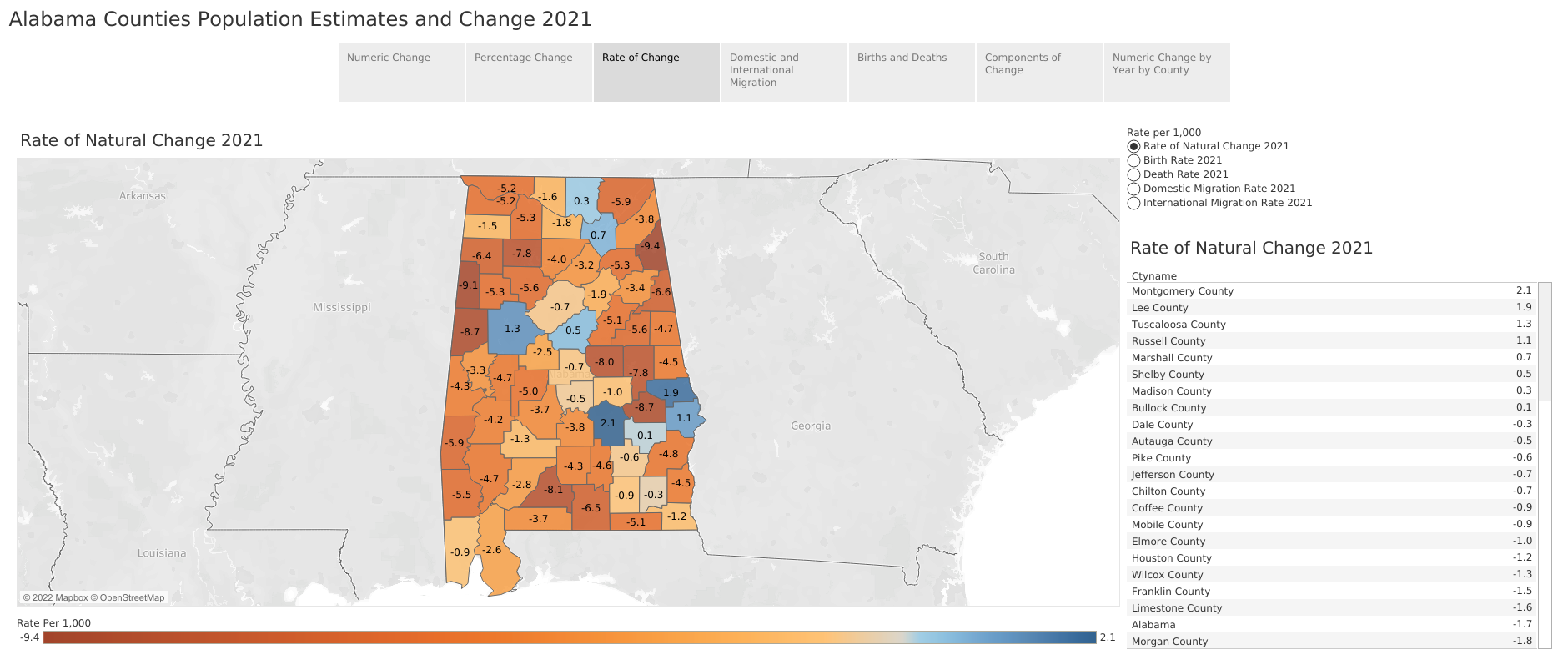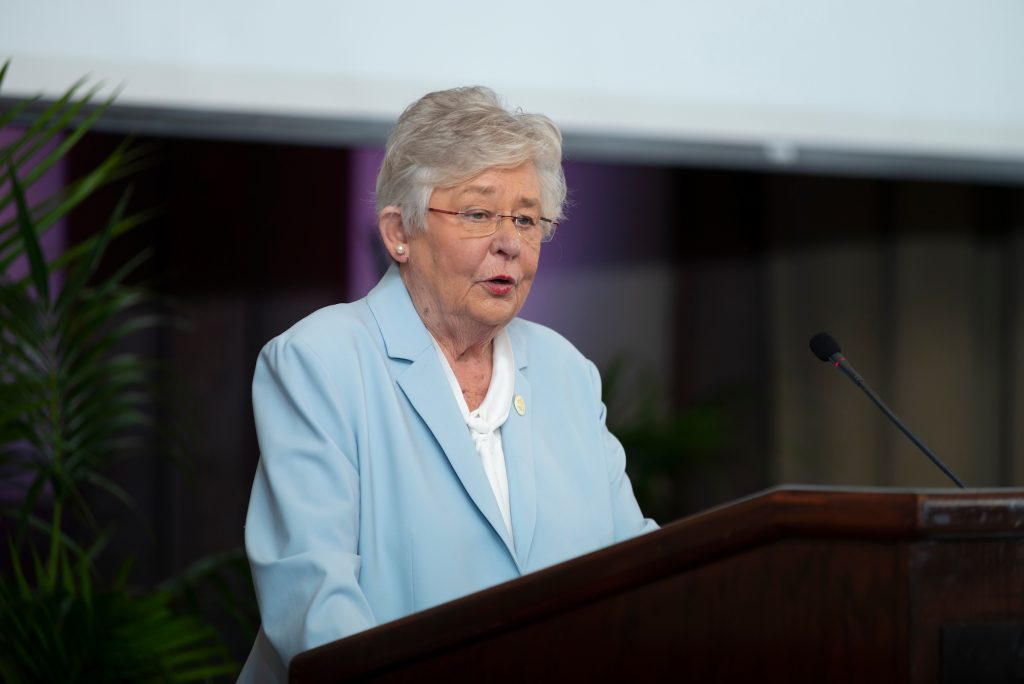
New estimates released by the U.S. Census Bureau show that more than half of Alabama counties lost population between July 1, 2020, and July 1, 2021, losses driven by an aging population, a declining birthrate, and an elevated death rate during the Covid-19 pandemic.
Statewide, the 65,868 deaths outnumbered 56,320 births, leading to a net loss through natural change of 8,548. In the visualization below, counties are shaded by their rate of natural change. Only eight counties, those in blue, saw more births than deaths. Alabama had the 4th highest death rate in the U.S., behind West Virginia, Mississippi, and Maine.
However, stronger growth through domestic migration (individuals moving from other states to Alabama, but excluding movers who are foreign-born) helped the state offset those losses. Estimates issued earlier this year put Alabama’s population at 5,039,877, up by about 15,000 or 0.3%, from 2020. A net total of 22,136 domestic migrants moved to Alabama, offsetting the loss from natural change.
Two counties accounted for about half that growth, with coastal Baldwin adding 6,780 net new residents through migration and Madison County adding 5,335. Madison County’s neighbor, Limestone, added 3,388. Other north Alabama counties like Cullman, Lauderdale, Jackson, Morgan, Marshall, and Dekalb also saw gains from domestic migration. The counties containing the three other large population centers — Jefferson, Mobile, and Montgomery — saw population declines, according to the estimates. Meanwhile, counties linked to those metro core counties — counties like Shelby and St. Clair, Elmore and Lee, and Baldwin — saw growth. Modest growth also occurred in some Wiregrass counties — Coffee, Houston, and Henry.
Zooming out to look at the Southeast, similar patterns are evident. Core counties in Atlanta, Charlotte, Nashville, and Memphis lost population while surrounding metro counties grew. Generally, growth was more widespread in Tennessee, Florida, the Carolinas, and the northern half of Georgia. Overall, Alabama counties bordering Georgia, Tennessee, and Florida are growing. Coastal counties on the Southeast’s East and Gulf coasts have seen growth. Counties along the interstates benefit throughout the region. Still, rural counties and whole swaths of the interior South, including counties in central and western Alabama, continue to lose population, not yet connected to the regional engines of growth.
When it comes to counties grouped into metropolitan statistical areas (MSAs), The Daphne-Fairhope-Foley, Huntsville, and Auburn-Opelika MSAs continue to show strong population growth. Among the 358 U.S. metros, they rank No. 16, 40, 50, respectively, in terms of percentage population change.
On the other hand, metro Birmingham is still not seeing the pace of growth of other Southeastern metros. Gains in Shelby, St. Clair, Bibb, and Blount counties weren’t enough to overcome Jefferson County’s estimated population loss of 5,521. Over the past decade, Jefferson County’s natural increase plus population gains from international immigration offset a steady stream of domestic outmigration. But in 2021, deaths outnumbered births by 438, and international migration accounted for a gain of only 153 people. Meanwhile, the estimates show a net loss of 5,238 domestic residents moving out of Jefferson. That produced a net population loss for the MSA in 2021. The Birmingham-Hoover metropolitan statistical area ranked 258 out of 358 U.S. metros in percentage change.
Montgomery ranked No. 248, with a slight population gain, and the Mobile MSA ranked No. 305, with a population loss of 1,326. After strong growth over the past decade, Tuscaloosa County and its metro area lost population in 2021, according to the estimate. Its growth rank ranked it No. 284 among U.S. metros.
The Auburn-Opelika MSA added 2,617 residents, according to the estimates, a growth rate of 1.5%. Dothan, Decatur, and the Florence-Muscle Shoals MSAs also showed positive growth. The Anniston and Gadsden MSAs continued to post slight declines.
Using the menus and tabs in the visualizations above, you can explore birth and death rates, numerical and percentage change of counties and MSAs in Alabama and across the U.S. The state population estimates and components of change released earlier this year are below.
And the final visualization looks back to the results of the 2020 Census and compares population counts from April 2020 and April 2010.









